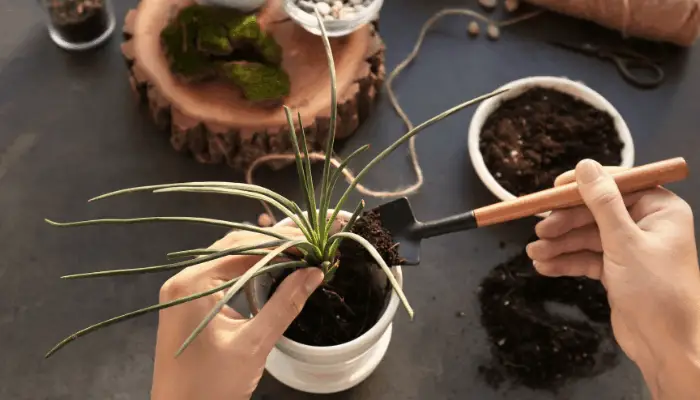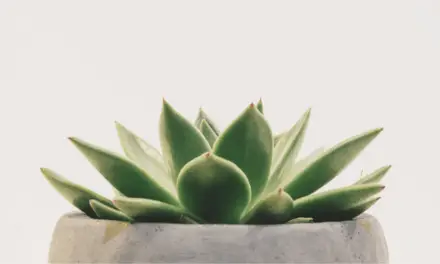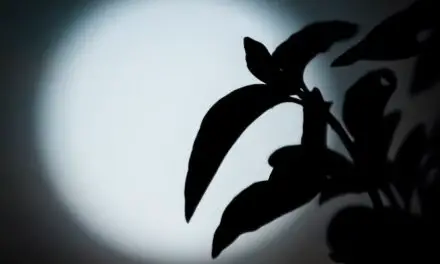If you’re new to caring for succulents, you may not understand what’s happening when the lower leaves of your succulent begin to curl under and starts to uproot.
You see the raised dirt, so you gently jiggle the plant and can feel that it’s no longer anchored to the soil.
The plant wasn’t like that when you started.
The leaves appear healthy, you water every two to four weeks and it’s getting a somewhat decent amount of sunlight.
It can be difficult to work out what exactly is going on and you’ll no doubt have some questions.
Do I have to replant my succulent or should I clean the roots?
What do I have to do?
Table of Contents
Why Is My Succulent Uprooting?

Your succulent is most likely uprooting because it is not receiving enough sunlight.
If a succulent doesn’t get enough sunshine, it may begin to uproot itself in an attempt to reach for the additional sunlight it needs.
Outdoor succulents may also uproot when they get blown and dislodged by strong winds.
How Do You Fix An Uprooted Succulent?
Give It More Sunlight
Most succulents must have at least three hours of consistent sunlight per day.
If they are deprived of that, they may begin to uproot or even fall apart.
If it’s a rosette-style succulent, you’ll notice the leaves flattening or curling under.
These are both signs that your succulent is not getting enough light.
This is the plant spreading out to stretch and get light to the center of the rosette.
If you find that this is happening to your succulent, relocate its resting spot to a sunny window or get a grow light.
Keep in mind that succulents usually do not react well to sudden and extreme changes in their environment.
If you’ve been keeping your succulent in a shaded spot, introduce it to additional sunlight gradually so it does not get burned by the sun.
Give it a few days to a week to see whether it corrects itself.
Make sure you rotate the plant every other day or so to ensure all sides of the plant get touched by light.
If the uprooting doesn’t begin to correct itself, then there’s something else happening.
Deepen The Roots
If it’s in a good, sunny place and it’s still uprooting, the problem may be that the plant’s roots aren’t going deep enough into the soil.
Taking delicate care of the roots, dig around the sides to get to the soil directly under the roots.
This is so the plant sinks deeper.
Use the removed soil to rebury the plant.
Fertilization And Soil Issues
Upon seeing that the succulent is still uprooting itself, even after giving it more light and burying it deeper, your plant may not like the soil or fertilizer you’re using.
Most succulents prefer a cactus-type mix that is loamy and dry.
If the soil is too clayey, there won’t be proper drainage and that can lead to your succulent being deprived of oxygen and nutrients, and sitting in soggy soil.
Succulents do not like any of these things, and if it continues, it can easily lead to the decline of your plant.
Also, ensure the fertilizer is weak and be sparing in your administration.
While some people fertilize their succulents as often as once a month, most of these types of plants will usually do fine with being fertilized one time per year in the spring.
For many common succulents, this is the season when they begin to grow and can make good use of the additional nutrients.
Succulents Uprooting Outdoors
For garden succulents, the reason for their uprooting could be from high winds or violent weather.
You can try securing and staking the plant into the ground with strong support.
Ensure the support has an opposite pull so the succulent stands upright.
Check the setup every other week to see how the plant stands on its own and to test the security of the support.
Will A Succulent Die If The Roots Are Exposed?
Seedlings and baby succulents shouldn’t have their roots exposed and could die as a result of it.
But, mature succulents can usually tolerate exposed roots for up to a week.
Be careful, though, because root exposure creates problems like attracting bugs and other pests that will gnaw away at them, thereby killing the succulent.
How To Replant Your Succulent
If the succulent is dormant or flowering, you’ll have to wait to repot it.
Keep it buried where it is and use a stake to secure it.
When removing the plant, ensure you don’t damage the root system to minimize transfer shock.
Inspect the roots for fungal problems, infestation, wilting, or any other signs of unhealthiness.
Tap the roots to shake off excess dirt and clean with fresh water.
Let the roots dry in a cool place for three to five days, making sure to keep the plant out of direct sun and rain.
Also, some succulents, like cacti, must maintain moist roots.
So, make sure you understand your specific succulent’s needs and wrap the roots in moistened moss or cloth if needed.
Then put the plant in a clean pot with dry soil and leave it to recover and reroot.
Only give it water if you see that the soil has completely dried out, but try to avoid water until you see it beginning to recover.
How Long Can Plants Be Out Of The Ground?
Four to six weeks is usually the longest you should keep your plant’s roots out of the ground.
You will have to keep the roots moist and out of the sun so they are not allowed to completely dry out.
You can keep them moist by covering them with a wet towel or periodically soaking them in water.
This will depend on the type and how hardy your succulent is.
Final Thoughts
Succulents can be easy to care for, but that doesn’t mean you can neglect them.
Even though they need very little water, many things can happen during the course of their life.
You should try to attend to these issues as they arise.
If given just a little care and love, your succulent can stay with you for many enjoyable years to come.




